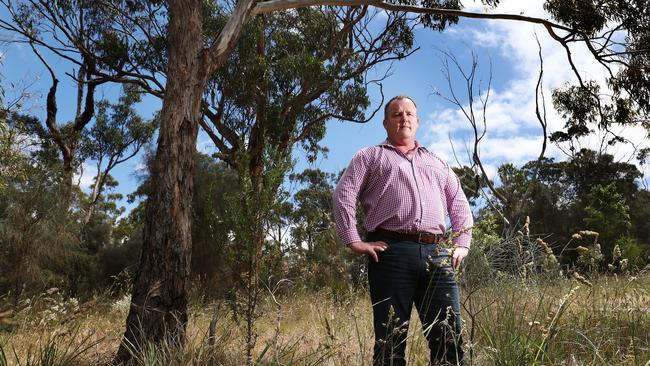Bike riders may be destroying the very places they’re admiring, say experts
The rise of mountain bike tourism in the state is being met with caution by some bushland management experts, who say riders may be destroying the very places they’ve come to enjoy.

Tasmania
Don't miss out on the headlines from Tasmania. Followed categories will be added to My News.
THE soaring popularity of mountain-bike riding through Tasmania’s bushland has prompted a warning about the potential for the sport to spread a soil-borne disease that can kill native Tasmanian plants.
Experts in bushland management are urging mountain bike riders to take precautions to ensure their muddy bikes are not spreading phytophthora, which causes root rot, around the state.
“There are some pretty dirty bikes out there, which are a higher risk than bushwalking,” said Natural Resource Management (NRM) South general manager David Bromfield.
“The bikes are covering more ground more quickly and taking more soil and material with them as they go,” he said.
MORE NEWS:
GOVERNOR TO STAY ON, AND FIGHT ON
In response to the growing popularity of mountain bike riding, NRM South has produced a pamphlet specifically to educate riders about phytophthora.
Bike-related tourism showed the largest growth of all sectors in the past financial year, up by 21.5 per cent. The Tourism Tasmania survey of interstate and international visitor activities shows cycling and mountain bike riding have attracted nearly 20,000 more visitors in the past four years – up from 27,899 in 2013-14 to 46,260 during 2017-18.
Mr Bromfield said bikes entering the state from overseas and interstate could be carrying a variety of risks. He said mud could carry many microscopic organisms – including pests, weed seeds and disease-causing pathogens.
He said the best advice was for riders to stick to the designated tracks and wash their bikes and equipment before and after going into new areas.
One community conservation group is so concerned about the risk posed by mountain bikes it is rallying support to mount legal action to stop the creation of new tracks in Tasmania’s pristine North East.

Break O’Day Council approved two mountain bike tracks late last year, one at St Helens and the other between the Blue Tier and Bay of Fires.
North East Bioregional Network president Todd Dudley said the tracks were being built through the Mount Pearson State Reserve, near the Bay of Fires, which contained extremely sensitive bushland including threatened species which would be devastated by an outbreak of phytophthora.
Mr Dudley urged authorities to apply the “precautionary principle” to natural areas where there was the “risk of long-term irreversible damage".
Break O’Day mayor Mick Tucker said council had sought expert advice to ensure the new tracks protected the local environment.
“We don’t want to destroy our environment because the environment is what brings people to our community,” Cr Tucker said.
He said washdown facilities would be provided at the tracks to limit the spread of phytophthora, and bikes would be limited to tacks to protect the surrounding environment.
“We have gone over and above everything required to make sure we protect the bushland,” he said.
MORE NEWS:
THIEVES HIT TWO BUSINESSES IN 15 MINUTES
AID AGENCIES BACK TASSIE-LED ARTS SCENE IN EGYPT
SHARKS OUT OF WATER AS BIG DRY BITES HARD
Cr Tucker said the track from the top of Blue Tiers to the beach at the Bay of Fires, covering 45km with a 750m decent, would become renowned among mountain bike riders and be a boon for local tourism.
Dorset mayor Greg Howard, whose municipality takes in the popular Blue Derby Mountain Bike Trails, said riders were encouraged to use the high-pressure hoses at washdown stations to limit the spread of phytophthora.
A spokeswoman for DPIPWE said walking and mountain bike trails were designed to avoid phytophthora affected areas where possible.
“The most significant thing that mountain bike riders and bushwalkers can do to limit the spread of phytophthora is to make sure that their gear, particularly boots and bike tyres, are cleaned of all dirt, and dried before they commence any walk, or ride, in a new area.”
anne.mather@news.com.au


